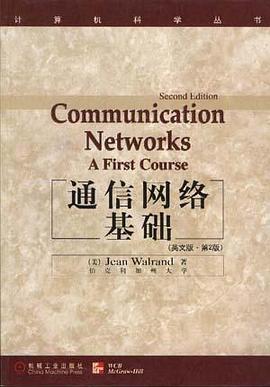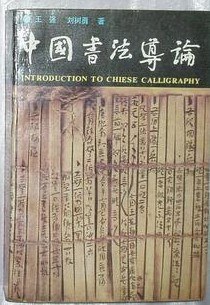

具體描述
著者簡介
圖書目錄
Contents
Preface xi
Chapter l Introduction to Communication Networks
1.1 What Are Communication Networks?
1.2 Why Should You Leam about Communication Networks?
1.3 What Should You Leam about Communication Networks?
1.4 Evolution of Communication Networks
1.4.1 Telephone Network
1.4.2 Computer Networks
1.5 Organization of the Book
Summary
Chapter 2 The Way Networks Work
2.1 Ethemet
2.1.1 Shared Ethemet: Hubs and Collisions
2.1.2 Discovering Addresses: ARP and RARP
2.1.3 Interconnecting Ethemets: Switches and Routers
2.2 Intemet
2.2.1 AnExample
2.2.2 Routing: OSPFandBGP
2.2.3 Transmission Control Protocol
2.2.4 Client/ServerApplications
2.3 Asynchronous Transfer Mode
2.3.1 MainFeatures
2.3.2 Routing
2.3.3 Control of QoS: LeakyBuckets
2.4 Network Architecture
2.4.1 Layered Architecture
2.4.2 End-to-End Services
2.4.3 Physical View
2.5 Complement l: Insights behind the Information Revolution
2.5.1 The Digital Revolution
2.5.2 Source and Channel Coding
2.5.3 Packet Switching
Summary
Problems
References
Chapter 3 Intemet
3.1 ABriefHistory
3.2 Architecture
3.2.1 LAN-Link Layer
3.2.2 Network Layer ,
3.2.3 Transport
3.2.4 Applications
3.3 Names and Addresses
3.3.1 Names
3.3.2 Addresses
3.4 Intemet Protocol
3.4.1 IP Datagrams and lCMP
3.4.2 OSPF
3.4.3 BGP
3.4.4 PlugandPlay: DHCP
3.4.5 Mobile IP
3.5 End-to-End Transmission
3.5.1 Overview
3.5.2 Retransmission Protocol
3.5.3 TCP
3.5.4 UDP
3.6 Complement l: Link Protocols
3.6.1 SLlP
3.6.2 PPP
3.7 Complement 2: Analysis of Dijkstra's Shortest Path Algorithm
3.7.1 Definition
3.7.2 Shortest Paths
3.8 Complement 3: Other Routing Algorithms
3.8.1 Bellman-Ford
3.8.2 Spanning Tree
3.9 Complement4:IPv6
3.10 Complement 5: Multicast Routing
3.10.1 Flooding
3.10.2 Spanning Tree Routing
3.10.3 Reverse-Path Forwarding
3.10.4 Core-Based Trees
3.10.5 MOSPF
3.10.6 PIM
Summary
Problems
References
Chapter 4 Local Area Networks
4.1 Architecture and Characteristics
4.1.1 Architecture
4.1.2Characteristics of LANs
4.2 Ethernet and IEEE 802.3
4.2.1 Layout
4.2.2 Physical Layer
4.2.3 MAC
4.2.4 Switched lOBASE-T
4.2.5 lOOBASE-T
4.2.6 Gigabit Ethemet
4.3 Token Ring Networks
4.3.1 Layout
4.3.2 Physical Layer
4.3.3 MAC
4.3.4 Interconnecting Token Rings
4.4 FDDI
4.4.1 Layout
4.4.2 Physical Layer
4.4.3 MAC
4.4.4 Station Management
4.5 Wireless LANs
4.5.1 Architecture
4.5.2 Physical Layer
4.5.3 Hiperlan
4.5.4 IEEE802.11
4.6 Logical Link Control
4.7 Complement 1: Latency of LANs
4.8 Complement 2: Analysis of CSMA/CD Protocol
4.8.1 CSMA/CD Protocol
4.8.2 EfficiencyofCSMA/CD
4.8.3 Analysis
4.8.4 Examples
4.8.5 Average Medium Access Time
4.8.6 Efficiency of IEEE 802.3
4.9 Complement 3: Analysis ofToken RingMAC Protocol
4.9.1 Token Ring MAC Protocol
4.9.2 Efficiency of Token Ring MAC Protocol
4.9.3 Analysis
4.9.4 Maximum Medium Access Time
4.10 Complement 4: Analysis of FDDl MAC Protocol
4.10.1 FDDl Protocol
4.10.2 MMATofFDDlProtocol
4.10.3 Analysis
4.10.4 Efficiency of FDDl Protocol
4.11 Complement5: ALOHA
4.11.1 Description
4.11.2 ALOHA Protocols
4.11.3 EfficiencyofALOHAProtocols
4.11.4 Analysis
4.11.5 Reservations
Summary
Problems
References
Chapter 5 Asynchronous Transfer Mode
5.1 Architecture
5.1.1 Protocol Layers
5.1.2 Three Application Examples
5.1.3 Design Philosophy of ATM
5.1.4 Operating Principles
5.1.5 ATM Cell Fonnat
5.1.6 AAL
5.1.7 Network Operations and Maintenance
5.2 Routing in ATM
5.2.1 Routing Tables
5.2.2 Network Node Interface
5.2.3 Switch Designs
5.3 End-to-End Services
5.3.1 Quality of Service Attributes
5.3.2 Traffic Descriptors
5.3.3 Service Classes
5.4 Intemetworking with ATM
5.4.1 IPoverATM
5.4.2 LAN Emulation over ATM
5.5 Complement: Delay in Simple Switch
Summary
Problems
References
Chapter 6 Data Link Layer and Retransmission Protocols
6.1 Framing
6.1.1 Encapsulation
6.1.2 ErrorControl
6.2 Retransmission Protocols
6.2.1 Link or End-to-End Control
6.2.2 Retransmission Protocols: Preview and Summary
6.3 Stop-and-Wait Protocol (SWP)
6.3.1 Summary of Operations
6.3.2 Correctness
6.3.3 Efficiency
6.4 Altemating Bit Protocol (ABP)
6.4.1 Summary of Operations
6.4.2 Correctness
6.4.3 Efficiency
6.5 GOBACKN(GBN)
6.5.1 Summary of Operations
6.5.2 Efficiency
6.5.3 Concrete Examples: Choosing W
6.5.4 Adapting to Network Delays
6.5.5 GO BACK N Summary
6.6 Selective Repeat Protocol (SRP)
6.6.1 Summary of Operations
6.6.2 Efficiency
6.6.3 Correctness
6.6.4 Selective Repeat Protocol Summary
6.7 Examples
6.7.1 DataLinkofSNA
6.7.2 Data Link Layer of Public Data Networks (X.25)
6.7.3 Retransmission Protocol in Intemet
6.7.4 Data Link Layer in Frame Relay
6.7.5 XMODEM
6.7.6 Kermit
6.8 Complement l: Error Control Codes
6.8.1 Calculating the CRC
6.8.2 Bose-Chaudhuri-Hocquenghem and Reed-Solomon Codes
6.8.3 Convolutional Codes
6.8.4 Turbo Codes
6.9 Complement 2: Correctness ofABP
6.10 Complement3: Correctness in a Non-PlFO Network
6.10.1 ABP
6.10.2 GBN
6.11 Complement 4: Congestion and Flow Control in Internet
6.11.1 Objectives and Mechanisms
6.11.2 Delay/Window Mechanism (Vegas)
6.11.3 Algorithm (Vegas)
6.11.4 Loss/Window Mechanisms (Tahoe, Reno)
6.11.5 Additive Increase-Multiplicative Decrease
6.11.6 Incompatibility of Reno and Vegas l 94
6.1l.7 Rate-Based Control: ABR in ATM
6.11.8 Detecting Late Acknowledgments
6.l2 Complement5: Efficiency of Protocols in the Presence of Errors
Summary
Problems
References
Chapter 7 Physical Layer
7.1 Communication Links and Their Characteristics
7.1.1 DigitalLink
7.1.2 Frequency and Propagation
7.1.3 Limitations
7.1.4 Converting between Bits and Signals
7.2 Optical Links
7.2.1 Overview
7.2.2 Propagation in Fibers
7.2.3 Light Sources :
7.2.4 Light Detectors
7.2.5 Free-Space Infrared
7.3 Copper Lines
7.3.1 Overview
7.3.2 Modulation
7.3.3 CATV and Video-on-Demand Systems
7.4 Radio Links
7.4.1 Overview
7.4.2 Propagation
7.4.3 Cellular Networks
7.5 Complement l: Shannon Capacity
7.6 Complement 2: Sampling and Quantization
7.7 Complement 3: SONET
7.7.1 SONET Architecture
7.7.2 Frames
7.8 Complement 4: Power Budget in Optical Link
7.9 Complement 5: RS-232-C
7.10 Complement 6: ADSL
Summary
Problems
References
Chapter 8 Security and Compression
8.1 Threats and Protections
8.1.1 Threats against Users
8.1.2 Threats against Documents
8.2 Cryptography
8.2.1 General Principles
8.2.2 Secret Key Cryptography
8.2.3 Public Key Cryptography
8.2.4 Hashing
8.3 Security Systems
8.3.1 Integrity
8.3.2 Key Management
8.3.3 Identification
8.3.4 Replications and Deletions
8.3.5 Kerberos
8.3.6 Pretty Good Privacy
8.4 Foundations of Compression
8.4.1 Lossy and Lossless Compression
8.4.2 Batch, Stream, Progressive, Multilayer
8.4.3 Source Coding
8.4.4 Finding the Minimum Number of Bits
8.4.5 Huffman Encoding
8.4.6 Lempel-Ziv Compression
8.5 Audio Compression
8.5.1 Differential Pulse Code Modulation (DPCM)
8.5.2 Adaptive DPCM (ADPCM)
8.5.3 Subband Coding ADPCM
8.5.4 Code Excited Linear Prediction
8.6 Video Compression
8.6.1 Some Algorithms
8.6.2 Discrete Cosine Transform
8.6.3 Motion Compensation
8.6.4 MPEG
8.7 Complement l: Secret Key Cryptography
8.7.1 SecretCodes
8.8 Complement 2: Public Key Cryptography
8.8.1 RSA
8.9 Complement3: Proof of RSA Lemma
8.10 Complement 4: Source Coding Theory
Problems
References
Chapter 9 Performance Evaluation and Monitoring
9.1 Monitoring, SNMP, CMOT. and RMON
9.1.1 Monitoring Summary
9.2 Models and Analysis
9.2.1 AFlFOQueue
9.2.2 M/M/i Queue
9.2.3 Application to Statistical Multiplexing
9.2.4 Networks of M/M/l Queues
9.2.5 W/G/1 Queues
9.2.6 A Word of Caution
9.2.7 Queues with Vacations
9.2.8 Priority Systems
9.2.9 Cyclic-Service Systems
9.2.10 Model Summary
9.3 Simulation
9.3.1 Time-Driven Simulation
9.3.2 Event-Driven Simulation
9.3.3 Regenerative Simulation
9.3.4 Simulation Packages
9.3.5 Simulation Summary
Summary
Problems
References
AppendixA Probability
A-l Probability and Random Variables
A.2 Expectation
A.3 Independence
A.4 Regenerative Method
A.5 Complement l: Channel Coding
Summary
Problems
References
Appendix B Queues and Networks of Queues
B.l Markov Chains and M/M/i Queues
B.2 NetworksofM/M/i Queues
B.3 Average Delays
Summary
Problems
References
Appendix C ConununicatioQ Principles
C.l Frequency Spectrum
C.2 Modulation arid Demodulation
C.3 Phase-Locked Loop
C.4 Nyquist's Sampling Theorem
Summary
References
Appendix D References
· · · · · · (收起)
Preface xi
Chapter l Introduction to Communication Networks
1.1 What Are Communication Networks?
1.2 Why Should You Leam about Communication Networks?
1.3 What Should You Leam about Communication Networks?
1.4 Evolution of Communication Networks
1.4.1 Telephone Network
1.4.2 Computer Networks
1.5 Organization of the Book
Summary
Chapter 2 The Way Networks Work
2.1 Ethemet
2.1.1 Shared Ethemet: Hubs and Collisions
2.1.2 Discovering Addresses: ARP and RARP
2.1.3 Interconnecting Ethemets: Switches and Routers
2.2 Intemet
2.2.1 AnExample
2.2.2 Routing: OSPFandBGP
2.2.3 Transmission Control Protocol
2.2.4 Client/ServerApplications
2.3 Asynchronous Transfer Mode
2.3.1 MainFeatures
2.3.2 Routing
2.3.3 Control of QoS: LeakyBuckets
2.4 Network Architecture
2.4.1 Layered Architecture
2.4.2 End-to-End Services
2.4.3 Physical View
2.5 Complement l: Insights behind the Information Revolution
2.5.1 The Digital Revolution
2.5.2 Source and Channel Coding
2.5.3 Packet Switching
Summary
Problems
References
Chapter 3 Intemet
3.1 ABriefHistory
3.2 Architecture
3.2.1 LAN-Link Layer
3.2.2 Network Layer ,
3.2.3 Transport
3.2.4 Applications
3.3 Names and Addresses
3.3.1 Names
3.3.2 Addresses
3.4 Intemet Protocol
3.4.1 IP Datagrams and lCMP
3.4.2 OSPF
3.4.3 BGP
3.4.4 PlugandPlay: DHCP
3.4.5 Mobile IP
3.5 End-to-End Transmission
3.5.1 Overview
3.5.2 Retransmission Protocol
3.5.3 TCP
3.5.4 UDP
3.6 Complement l: Link Protocols
3.6.1 SLlP
3.6.2 PPP
3.7 Complement 2: Analysis of Dijkstra's Shortest Path Algorithm
3.7.1 Definition
3.7.2 Shortest Paths
3.8 Complement 3: Other Routing Algorithms
3.8.1 Bellman-Ford
3.8.2 Spanning Tree
3.9 Complement4:IPv6
3.10 Complement 5: Multicast Routing
3.10.1 Flooding
3.10.2 Spanning Tree Routing
3.10.3 Reverse-Path Forwarding
3.10.4 Core-Based Trees
3.10.5 MOSPF
3.10.6 PIM
Summary
Problems
References
Chapter 4 Local Area Networks
4.1 Architecture and Characteristics
4.1.1 Architecture
4.1.2Characteristics of LANs
4.2 Ethernet and IEEE 802.3
4.2.1 Layout
4.2.2 Physical Layer
4.2.3 MAC
4.2.4 Switched lOBASE-T
4.2.5 lOOBASE-T
4.2.6 Gigabit Ethemet
4.3 Token Ring Networks
4.3.1 Layout
4.3.2 Physical Layer
4.3.3 MAC
4.3.4 Interconnecting Token Rings
4.4 FDDI
4.4.1 Layout
4.4.2 Physical Layer
4.4.3 MAC
4.4.4 Station Management
4.5 Wireless LANs
4.5.1 Architecture
4.5.2 Physical Layer
4.5.3 Hiperlan
4.5.4 IEEE802.11
4.6 Logical Link Control
4.7 Complement 1: Latency of LANs
4.8 Complement 2: Analysis of CSMA/CD Protocol
4.8.1 CSMA/CD Protocol
4.8.2 EfficiencyofCSMA/CD
4.8.3 Analysis
4.8.4 Examples
4.8.5 Average Medium Access Time
4.8.6 Efficiency of IEEE 802.3
4.9 Complement 3: Analysis ofToken RingMAC Protocol
4.9.1 Token Ring MAC Protocol
4.9.2 Efficiency of Token Ring MAC Protocol
4.9.3 Analysis
4.9.4 Maximum Medium Access Time
4.10 Complement 4: Analysis of FDDl MAC Protocol
4.10.1 FDDl Protocol
4.10.2 MMATofFDDlProtocol
4.10.3 Analysis
4.10.4 Efficiency of FDDl Protocol
4.11 Complement5: ALOHA
4.11.1 Description
4.11.2 ALOHA Protocols
4.11.3 EfficiencyofALOHAProtocols
4.11.4 Analysis
4.11.5 Reservations
Summary
Problems
References
Chapter 5 Asynchronous Transfer Mode
5.1 Architecture
5.1.1 Protocol Layers
5.1.2 Three Application Examples
5.1.3 Design Philosophy of ATM
5.1.4 Operating Principles
5.1.5 ATM Cell Fonnat
5.1.6 AAL
5.1.7 Network Operations and Maintenance
5.2 Routing in ATM
5.2.1 Routing Tables
5.2.2 Network Node Interface
5.2.3 Switch Designs
5.3 End-to-End Services
5.3.1 Quality of Service Attributes
5.3.2 Traffic Descriptors
5.3.3 Service Classes
5.4 Intemetworking with ATM
5.4.1 IPoverATM
5.4.2 LAN Emulation over ATM
5.5 Complement: Delay in Simple Switch
Summary
Problems
References
Chapter 6 Data Link Layer and Retransmission Protocols
6.1 Framing
6.1.1 Encapsulation
6.1.2 ErrorControl
6.2 Retransmission Protocols
6.2.1 Link or End-to-End Control
6.2.2 Retransmission Protocols: Preview and Summary
6.3 Stop-and-Wait Protocol (SWP)
6.3.1 Summary of Operations
6.3.2 Correctness
6.3.3 Efficiency
6.4 Altemating Bit Protocol (ABP)
6.4.1 Summary of Operations
6.4.2 Correctness
6.4.3 Efficiency
6.5 GOBACKN(GBN)
6.5.1 Summary of Operations
6.5.2 Efficiency
6.5.3 Concrete Examples: Choosing W
6.5.4 Adapting to Network Delays
6.5.5 GO BACK N Summary
6.6 Selective Repeat Protocol (SRP)
6.6.1 Summary of Operations
6.6.2 Efficiency
6.6.3 Correctness
6.6.4 Selective Repeat Protocol Summary
6.7 Examples
6.7.1 DataLinkofSNA
6.7.2 Data Link Layer of Public Data Networks (X.25)
6.7.3 Retransmission Protocol in Intemet
6.7.4 Data Link Layer in Frame Relay
6.7.5 XMODEM
6.7.6 Kermit
6.8 Complement l: Error Control Codes
6.8.1 Calculating the CRC
6.8.2 Bose-Chaudhuri-Hocquenghem and Reed-Solomon Codes
6.8.3 Convolutional Codes
6.8.4 Turbo Codes
6.9 Complement 2: Correctness ofABP
6.10 Complement3: Correctness in a Non-PlFO Network
6.10.1 ABP
6.10.2 GBN
6.11 Complement 4: Congestion and Flow Control in Internet
6.11.1 Objectives and Mechanisms
6.11.2 Delay/Window Mechanism (Vegas)
6.11.3 Algorithm (Vegas)
6.11.4 Loss/Window Mechanisms (Tahoe, Reno)
6.11.5 Additive Increase-Multiplicative Decrease
6.11.6 Incompatibility of Reno and Vegas l 94
6.1l.7 Rate-Based Control: ABR in ATM
6.11.8 Detecting Late Acknowledgments
6.l2 Complement5: Efficiency of Protocols in the Presence of Errors
Summary
Problems
References
Chapter 7 Physical Layer
7.1 Communication Links and Their Characteristics
7.1.1 DigitalLink
7.1.2 Frequency and Propagation
7.1.3 Limitations
7.1.4 Converting between Bits and Signals
7.2 Optical Links
7.2.1 Overview
7.2.2 Propagation in Fibers
7.2.3 Light Sources :
7.2.4 Light Detectors
7.2.5 Free-Space Infrared
7.3 Copper Lines
7.3.1 Overview
7.3.2 Modulation
7.3.3 CATV and Video-on-Demand Systems
7.4 Radio Links
7.4.1 Overview
7.4.2 Propagation
7.4.3 Cellular Networks
7.5 Complement l: Shannon Capacity
7.6 Complement 2: Sampling and Quantization
7.7 Complement 3: SONET
7.7.1 SONET Architecture
7.7.2 Frames
7.8 Complement 4: Power Budget in Optical Link
7.9 Complement 5: RS-232-C
7.10 Complement 6: ADSL
Summary
Problems
References
Chapter 8 Security and Compression
8.1 Threats and Protections
8.1.1 Threats against Users
8.1.2 Threats against Documents
8.2 Cryptography
8.2.1 General Principles
8.2.2 Secret Key Cryptography
8.2.3 Public Key Cryptography
8.2.4 Hashing
8.3 Security Systems
8.3.1 Integrity
8.3.2 Key Management
8.3.3 Identification
8.3.4 Replications and Deletions
8.3.5 Kerberos
8.3.6 Pretty Good Privacy
8.4 Foundations of Compression
8.4.1 Lossy and Lossless Compression
8.4.2 Batch, Stream, Progressive, Multilayer
8.4.3 Source Coding
8.4.4 Finding the Minimum Number of Bits
8.4.5 Huffman Encoding
8.4.6 Lempel-Ziv Compression
8.5 Audio Compression
8.5.1 Differential Pulse Code Modulation (DPCM)
8.5.2 Adaptive DPCM (ADPCM)
8.5.3 Subband Coding ADPCM
8.5.4 Code Excited Linear Prediction
8.6 Video Compression
8.6.1 Some Algorithms
8.6.2 Discrete Cosine Transform
8.6.3 Motion Compensation
8.6.4 MPEG
8.7 Complement l: Secret Key Cryptography
8.7.1 SecretCodes
8.8 Complement 2: Public Key Cryptography
8.8.1 RSA
8.9 Complement3: Proof of RSA Lemma
8.10 Complement 4: Source Coding Theory
Problems
References
Chapter 9 Performance Evaluation and Monitoring
9.1 Monitoring, SNMP, CMOT. and RMON
9.1.1 Monitoring Summary
9.2 Models and Analysis
9.2.1 AFlFOQueue
9.2.2 M/M/i Queue
9.2.3 Application to Statistical Multiplexing
9.2.4 Networks of M/M/l Queues
9.2.5 W/G/1 Queues
9.2.6 A Word of Caution
9.2.7 Queues with Vacations
9.2.8 Priority Systems
9.2.9 Cyclic-Service Systems
9.2.10 Model Summary
9.3 Simulation
9.3.1 Time-Driven Simulation
9.3.2 Event-Driven Simulation
9.3.3 Regenerative Simulation
9.3.4 Simulation Packages
9.3.5 Simulation Summary
Summary
Problems
References
AppendixA Probability
A-l Probability and Random Variables
A.2 Expectation
A.3 Independence
A.4 Regenerative Method
A.5 Complement l: Channel Coding
Summary
Problems
References
Appendix B Queues and Networks of Queues
B.l Markov Chains and M/M/i Queues
B.2 NetworksofM/M/i Queues
B.3 Average Delays
Summary
Problems
References
Appendix C ConununicatioQ Principles
C.l Frequency Spectrum
C.2 Modulation arid Demodulation
C.3 Phase-Locked Loop
C.4 Nyquist's Sampling Theorem
Summary
References
Appendix D References
· · · · · · (收起)
讀後感
評分
評分
評分
評分
評分
用戶評價
评分
评分
评分
评分
评分
相關圖書
本站所有內容均為互聯網搜索引擎提供的公開搜索信息,本站不存儲任何數據與內容,任何內容與數據均與本站無關,如有需要請聯繫相關搜索引擎包括但不限於百度,google,bing,sogou 等
© 2025 book.quotespace.org All Rights Reserved. 小美書屋 版权所有




















